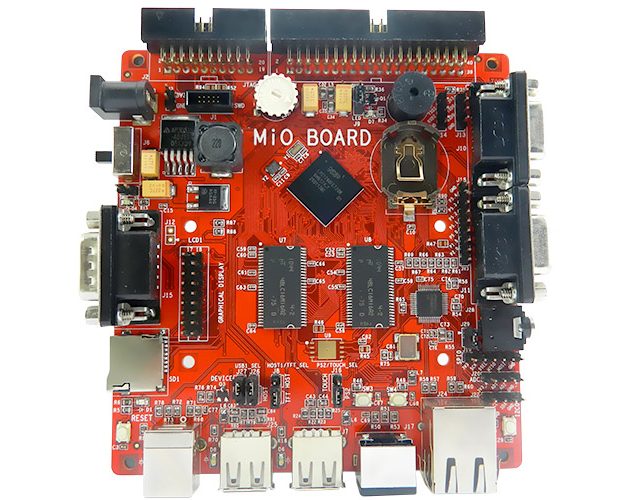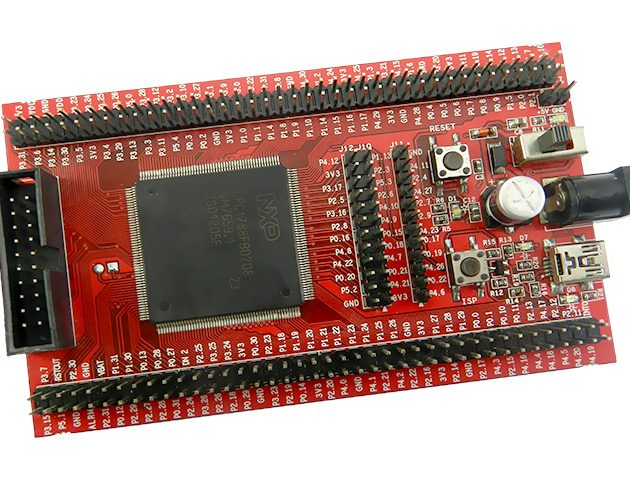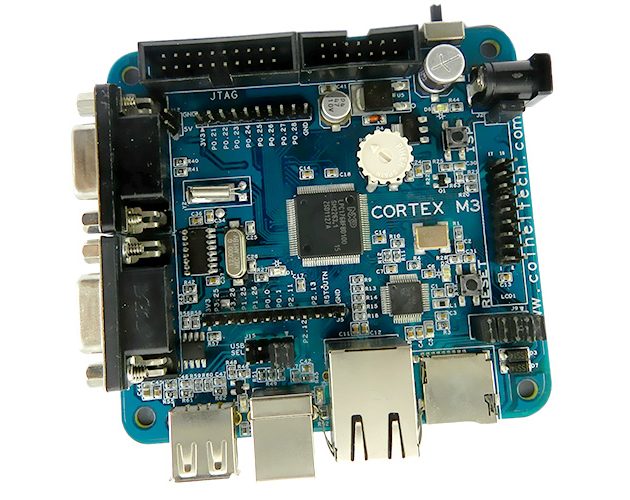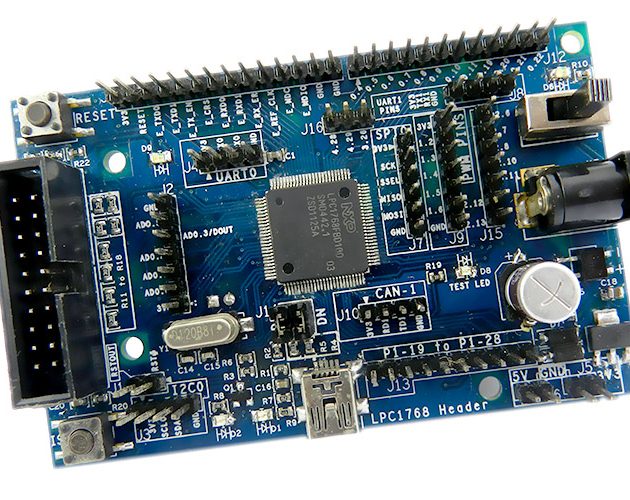Description
LPC176x Mini Board has an onboard Cortex M3 core microcontroller (LPC1768). This board has connectivity options for Ethernet, USB Device, Serial UART, CAN, JTAG etc.
LPC1768 Mini Board Features
- USB Device Connectivity Options.
- Ethernet with DP83848 PHY MAC.
- RS232 Interface for UART0 and UART3
- PWM Pinouts
- Unused I/O pinouts.
- OnBoard Reset and ISP Switches.
- On Board Power Supply Circuit for +5V and +3.3V (USB or external Power Source input options)
- On Board 12 MHz Clock
- 32.768 KHz Clock for RTC.
- Onboard 20 pin JTAG connector for debugging/programming applications.
- LED for Power Supply, USB, Ethernet and Test LED.
- Board Dimensions: 98 x 60 mm
- Board Specifications:
-
-
- Laminate: FR4
- Board Thickness: 1.6mm
- Finish: ENIG
-
-
Kit Deliverables:
- LPC1768 Mini Board.
- USB Cable.
Note: JTAG Programmer/Debugger is not the part of the package and needs to be purchased separately.
Features of LPC1768
Best in class Cortex M3 Hardware.
- 100 MHz ARM Core with 64 KB of SRAM and 512 KB Flash.
- 8-channel general purpose DMA controller, 4 UARTs, 2 CAN channels, 2 SSP controllers, SPI interface, 3 I2C interfaces, 2-input plus 2-output I2S interface, 8-channel 12-bit ADC, 10-bit DAC, motor control PWM, Quadrature Encoder interface, 4 general purpose timers, 6-output general purpose PWM, ultra-low power RTC with separate battery supply, and up to 70 general purpose I/O pins.
JTAG Options for Debug/Programming:
Parallel Port JTAG (tested on Keil uvision4.53 IDE, Rowley Crossworks)
CoiNel ARM USB JTAG (tested on Rowley CrossWorks)
CoiNel CoLinkEx (tested on Keil)
The Board can also be used with other compatible JTAG Debuggers.
The details on how to use the JTAG and its associated plugins are provided with the documents and also can be downloaded from Download section.
ISP Programming:
Programming can be done through the on chip boot loader using UART interface (UART0). You will have to use a TTL to RS232 Converter to do so since the pinout are TTL logic and PC uses RS232 logic. The tool used for programming is Flash Magic.
Programming Using CoFlash
The controller can be Programmed using CoFlash from CooCox. The binary file needs to loaded using this tool. You can download the tool in the download section.
To use CoFlash, you would need CoiNel ARM USB JTAG or CoiNel CoLinkEx.
USB Boot Loader
The Board can also be programmed via USB Secondary Bootloader. Check LPC1768 USB Boot Loader document for more details.
TOOLS:
Our products can be used with majority of IDE and plugins that support Cortex M3 family. A few IDE and plugin details are given below.
- Keil uvision4.53 IDE (32K code limited version can be used. Use 4.53 and above)
- Rowley Crossworks (30 day evaluation version can be used.)
- IAR workbench (32K code limited version could be used.)
- CooCox CoIDE (Unlimited, Open Source)
Plugins/Programmers:
H-JTAG, CooCox Colink, Flash Magic have been tested.
Compatible debuggers like U-Link, J-Link etc can also be used.






Reviews
There are no reviews yet.